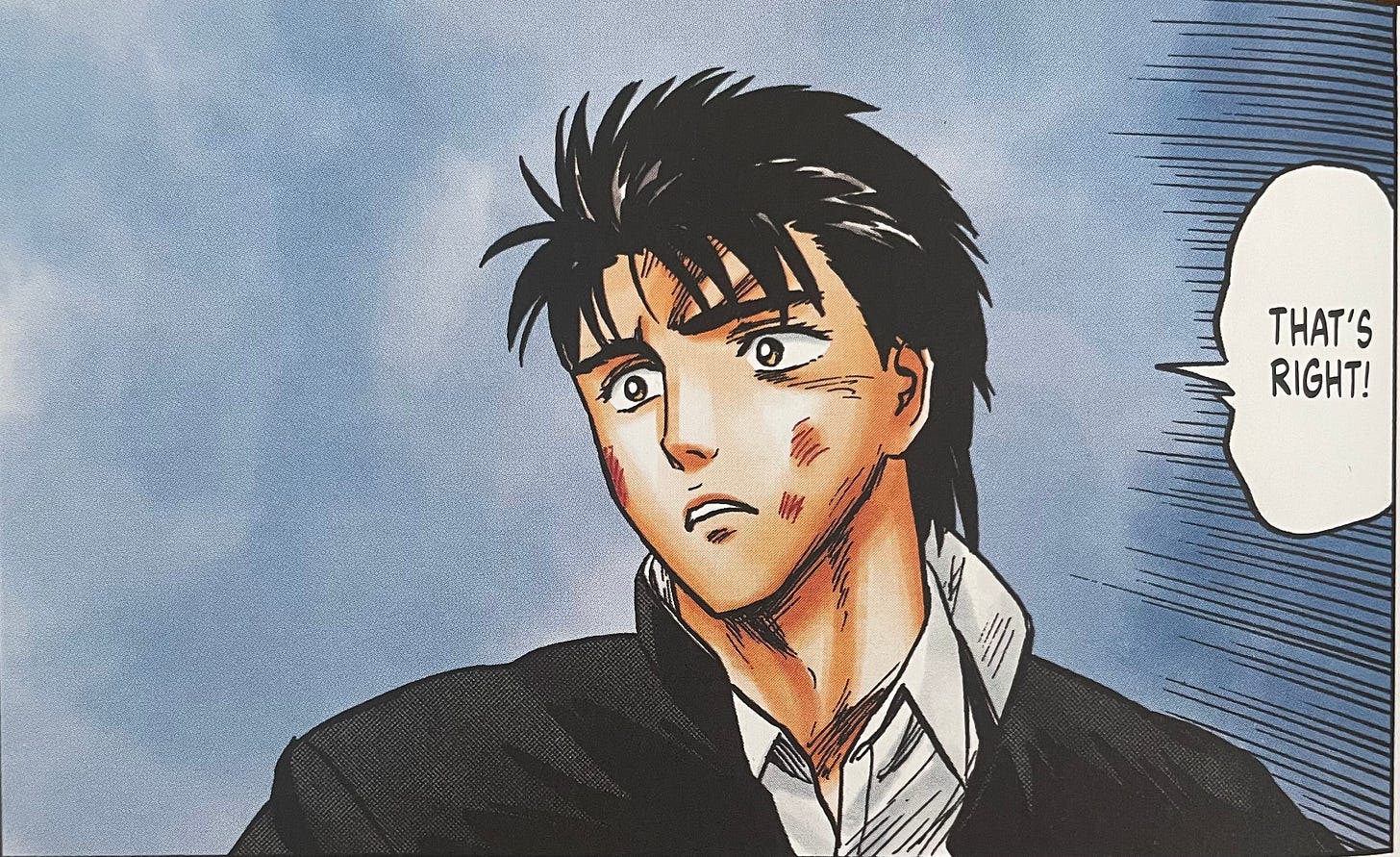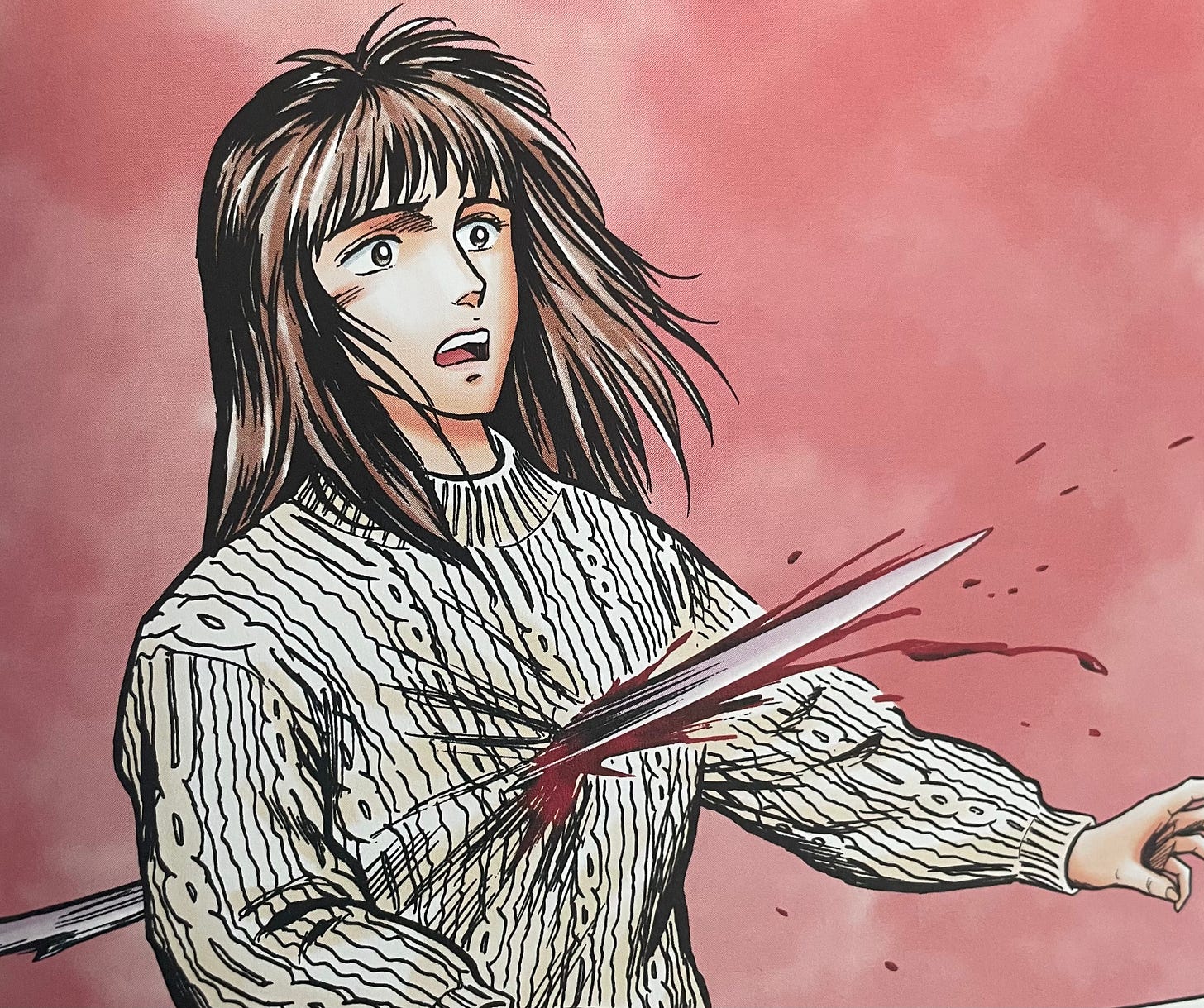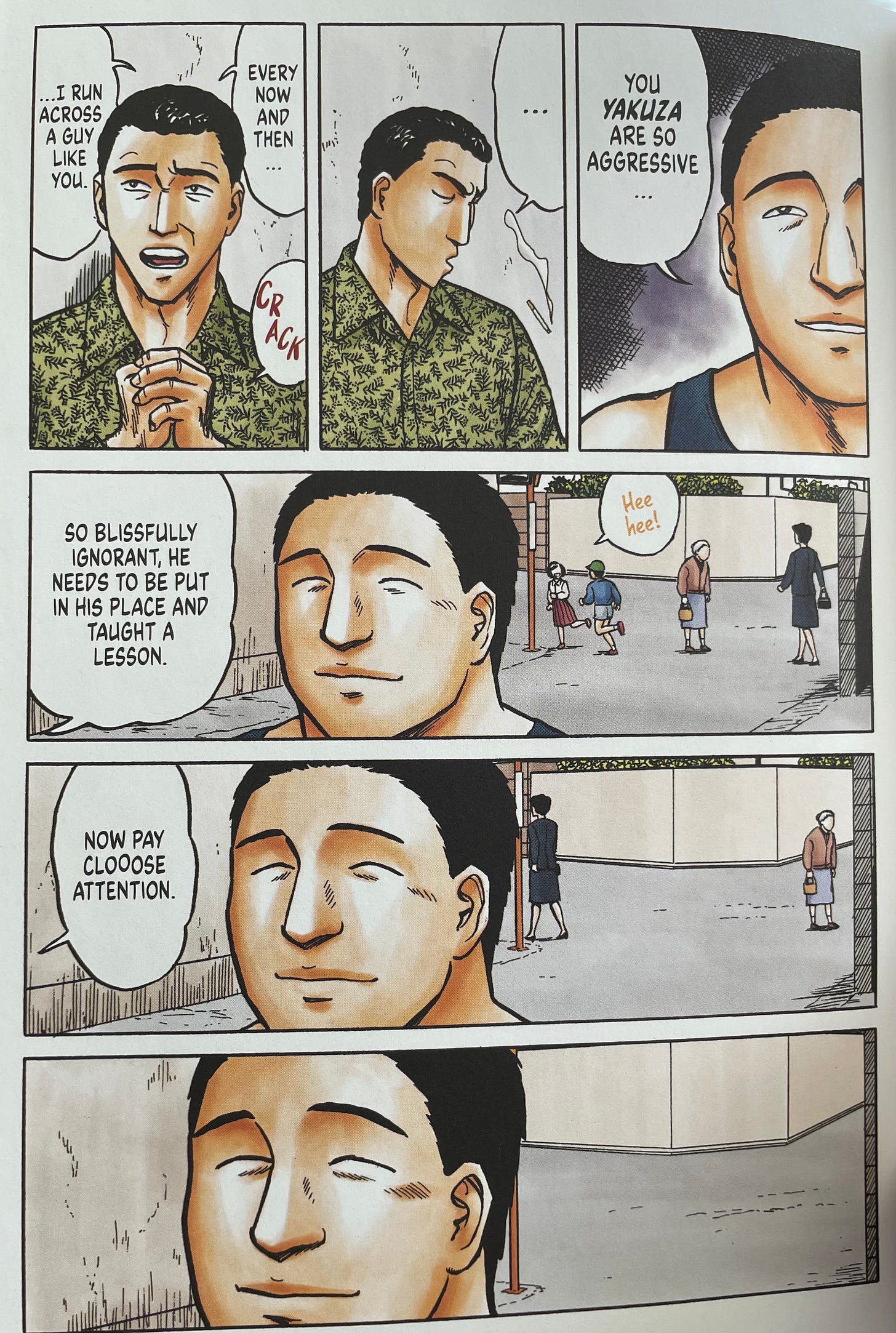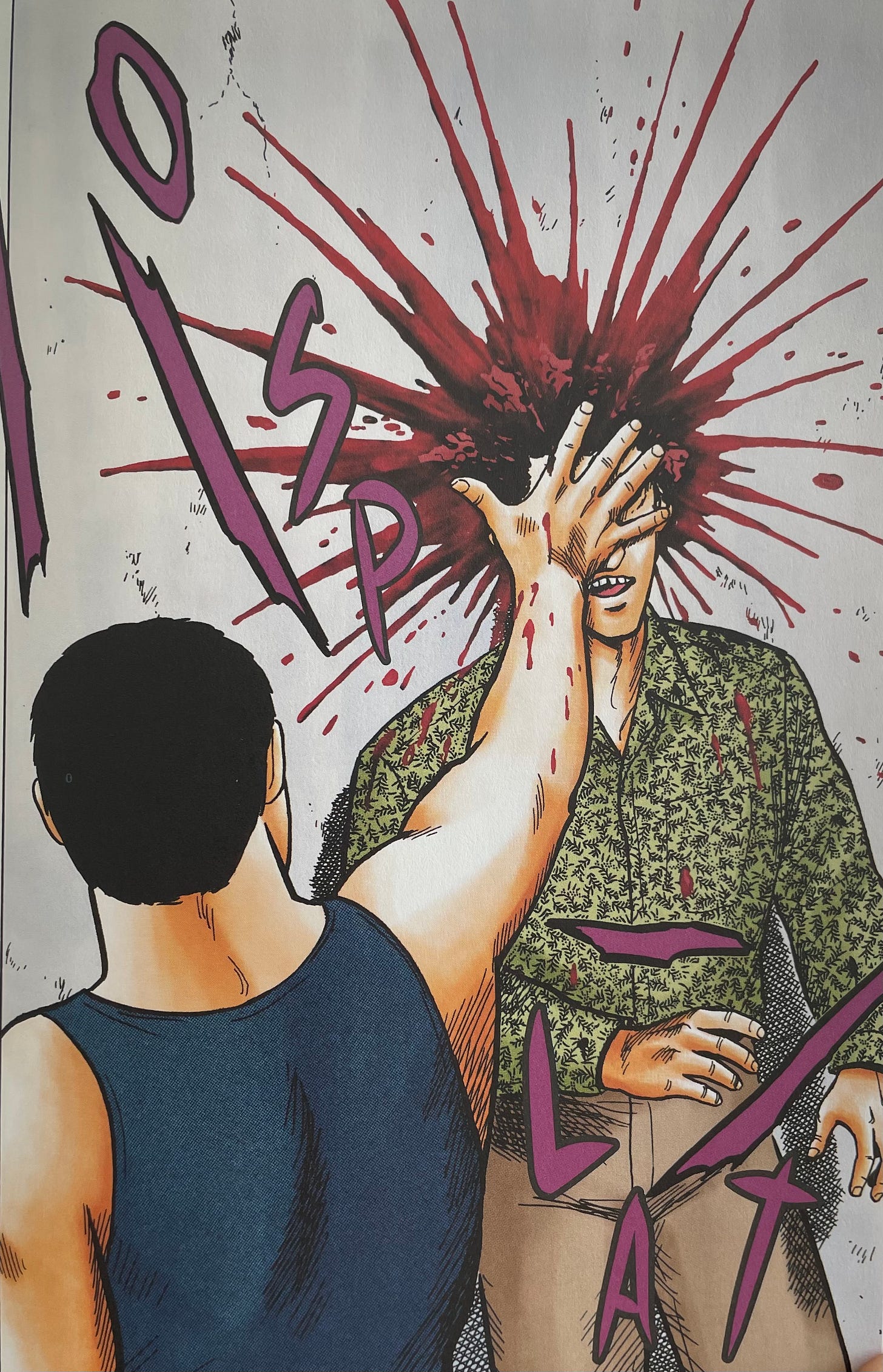Please note! There will be major Parasyte spoilers in this post, as well as potentially disturbing imagery from Parasyte.
Preface!
Having read a good deal of Junji Ito, Kazuo Umezz, PTSD Radio, The Summer Hikaru Died, the list goes on, I wondered if any sort of visual horror could still get me. As I learned in PTSD Radio, while twisted, repulsive faces certainly have a novelty about them. But given the frequent exposure of said faces, it lessens the horror affect, even if it never loses the novelty.
Then Parasyte entered the conversation, and while I wouldn’t say that the body horror was particularly revolutionary in visuals, it was pretty wild. And it was the framing of the horror that made it something different.
So much so that I almost dedicated an entire MangaCraft post to body horror, and how these series accomplish what they do and still stand apart. Maybe that post is still coming, who knows, for now, I want to talk about the framing device Parasyte employs.
Preface over.
Sometime around 2017, I took my first comic book writing class. I was ready to learn how to take my storytelling into a medium that I adored, but never understood how people actually wrote. I loved the idea of visual storytelling because I was such a big consumer of it, but the mechanics were alien.
So anyway, in this class, a new concept was introduced—the page turn. Not gonna lie, I thought this was a stupid concept. Mainly because, as I’ve mentioned before, I struggle when writing takes on formulaic or mathematical qualities. For instance, I weathered a lecture once about how you should highlight every single sentence of your work-in-progress, color-coded to identify if that sentence contributes to character, plot or setting. Then you could evaluate the balance of your story based on the color.
No thank you. That’s annoying. And storytelling is supposed to be fun.
So when page turns came up, this concept of leaving the last panel on a page to set up a big reveal on the following page, I balked. And I continued to balk at the concept through the years.
And then I met Parasyte.
Before we get into Parasyte, here’s what you need to know.
A bunch of extraterrestrial parasites have come to earth. They burrow into humans, take over their brains, and are capable of some pretty incredible, elastic feats of ultra violence. Mainly, they kill and eat humans. But still look like humans, just with slightly dead eyes. One parasite didn’t quite succeed, getting stuck in Shinichi’s right hand. So Shinichi now has a parasite companion at all times, capable of some pretty gnarly stuff as well. But the get along, for the most part.
And that’s all you need to know.
Also let me just say again that there is some pretty grisly imagery coming up here in a bit, because that’s Parasyte’s style, so consider this your second warning.
Pick up any volume of Parasyte and you’ll see what I’m talking about, but I want to focus on Volume 4, because it feels like where the series really started to hit its stride. Volume 1-3 relied on page turns to deliver a lot of shock value, to make the body horror that much more horrific.
It worked. Quite well.
But in what I can only describe as super intelligent planning and pacing, that shock and awe of the body horror only goes so far before you know what these elements look like. Just like PTSD Radio, where the horror elements are still noteworthy, but you do get desensitized over time.
It was in Volume 4 of Parasyte that the shock value merged with plot and became an effective tool for setting up dramatic reveals. And it was done so sporadically that it worked on multiple fronts. On the one hand, the first three volumes have led us to expect that any page turn could reveal literally anything. You never know what is coming when you turn the page.
That is wielded so well in Volume 4 because there aren’t that many page turn reveals. So even though the tension carries over from the first three volumes, it never gets released, except sporadically, and for monumental moments.
We’re going to look at the second big page turn as a focus. And this is where the big spoiler comes in, so consider this your third and final warning.
In this scene, Kana, a psychically-inclined new friend of Shinichi, who is 100% crushing on him to boot, is out looking for him. Unfortunately, she finds another parasite instead. Now, much like Hell’s Paradise, this is a series that lives on the fence in terms of can a character die or not. So when Kana comes upon this parasite eating a human being, as readers, we just don’t know what to expect. Could she really die?
Here are the panels before the turn.
At this point, so many things could happen. Shinichi could arrive to block the blade. This might not actually be the blade of the parasite she’s just found. She could discover she has some kind of special powers. The blade could be intended for someone else that Kana hasn’t seen.
Or…
…she can just die.
This comes mere pages after Shinichi has confided all of his secrets to Kana, the fact that he has a parasite living in him, that he has a unique relationship with that parasite, and that he can protect her.
None of that matters now. She’s dead.
Let’s backtrack to the other page turn in Volume 4 that really accentuates just how well Parasyte wields this tool. Here we have this jolly guy out for a jog. He stumbles, presumably accidentally, on a Yakuza base and the Yakuza are about to pick a fight they won’t soon forget. Thus far, all the parasites we’ve seen aren’t exactly big smilers, so while we may have our suspicions about Mr. Smiles here, we don’t know what he’s up to. Here’s the page before the turn.
What’s going to happen on the turn? Are we going to find out the parasites have infiltrated the Yakuza? Is this just a do-gooder who himself just picked the wrong fight? Where did everyone in the background go? Also, not for nothing, but it’s disorienting to deploy Yakuza here, because if Mr. Smiles here is a parasite, then we have a parasite going up against the Yakuza. Which is better?
And the turn…
Oh.
Well.
Guess he was a parasite. What follows is a few pages of sheer brutality. Every Yakuza member is graphically demolished by Mr. Smiles. It’s like everything during Mr. Smiles innocuous jog builds up this air of uncertainty and then the air is let out when we turn this page. That tension is replaced by a sudden understanding and, depending on your tastes, either a montage of disgust or a montage of joyous destruction. No judgment, whichever you are.
This effect is not nearly the same without the page turn. Let me demonstrate why with another page from Parasyte, Volume 4:
In this scene, the poor lady in the pink suit has stumbled on the wrong person in the park. On the previous page, he leads her back into some bushes, and then, on the turn, there’s the CRACK sound, and then the inevitable reveal further down that she isn’t coming back from that.
Still a disturbing visual, but nothing framing it or setting it up to be anything other than what it is.
So why didn’t this scene get a page turn? Well that’s the thing. It certainly could have. The CRACK panel could have been the final panel on the previous page, and then the reveal being that it was her neck that we just heard. But that’s where pacing comes into it. If you’re using every other page to frame a shock value turn, you lose the shock value entirely. Desensitization.
With Kana’s death coming, that is the ultimate plot point to frame with a page turn. It’s really the big moment of the entire volume, so all else should, ideally, funnel into that moment. To make that moment the focal point.
It’s madness to think about how much thought goes into framing and pacing and how page turns can serve those ends, but boy howdy does it work well when it all pans out.










THIS was a page turner! Or should I say, scroller…? Regardless. Amazing!
So interesting to read about the page turn! I love how that's a thing that only works for a visual medium like manga. There's a certain level of audience participation in it too... from the physical act of turning the page (what am I about to see that I won't be able to unsee?) to the mental game of guessing what might be waiting on the other side... have I anticipated the correct out come, am I going to be surprised?
Would be interesting to see how it's used effectively in other genres.